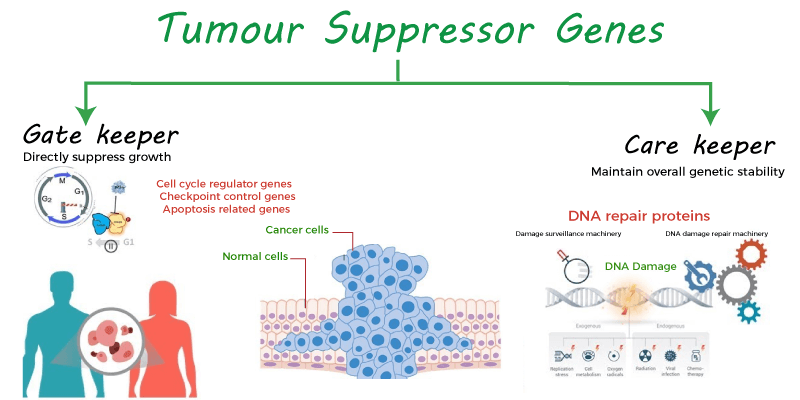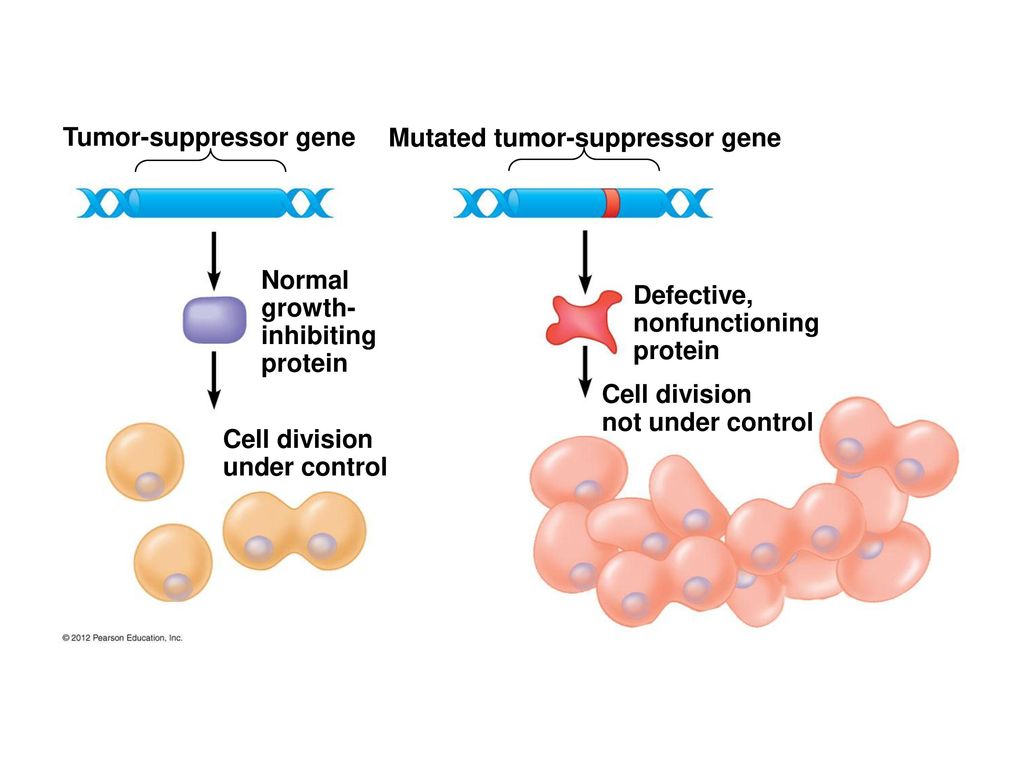How Do Mutated Tumor Suppressor Genes Affect the Cell Cycle Biology Diagrams But most tumor suppressor gene mutations are acquired during a person's lifetime, not inherited. For example, TP53 is an important tumor suppressor gene. It codes for the p53 protein, which helps keep cell division under control. Inherited changes in the TP53 gene can lead to Li-Fraumeni syndrome. Family members with this syndrome have an The interference with cell adhesion results in indirect suppression of cell division due to contact inhibition. It has been observed that a few tumor suppressors may act in cooperation to inhibit cell mitosis 3. Tumor suppressors p15, p16, p18, p19, p21 and p27 inhibit cyclin-dependent kinases (CDKs), which, in turn, inhibit Rb 11, 24.

Mammalian sterile 20-like kinase 1/2 (MST1/2) are core tumor suppressors in the Hippo signaling pathway. MST1/2 have been shown to regulate mitotic progression. Here, we report a novel mechanism for phospho-regulation of MST2 in mitosis and its biological significance in cancer. We found that the mi …

The tumor suppressor CDKN3 controls mitosis Biology Diagrams
This factor acts as tumor suppressor which inhibits the activities of cyclin D-dependent kinases, Finally, RASSF1A, a key negative regulator for mitosis progression and well-known tumor suppressor, undergoes frequent tumor-specific epigenetic inactivation in a wide range of tumors, and especially in lung cancer . 5. Conclusion The RB tumor suppressor is well known for its ability to repress transcription and to prevent cell proliferation by arresting cells either in G1, at the G1/S transition, or in S phase of the cell cycle. Other E2F-targets also have well defined roles in mitosis (Table 1, Figure 2) and promote chromosome segregation errors when overexpressed

The stages of the cell cycle (G1: Gap 1, S: DNA synthesis, G2: Gap 2, and M: mitosis) are indicated. Tumor suppressors act to maintain checkpoints (arrows) whereas oncogenes allow for checkpoints

Functional Mechanisms for Human Tumor Suppressors Biology Diagrams
Chief among these factors is the drug retention issue, where paclitaxel has been shown to linger in the tumor cells for a week and is thus able to exert its cytotoxicity longer compared with the newer mitosis-selective inhibitors with a median half-life of approximately 13 h. 35, 64, 65, 66 Additionally, it is likely that quiescent cancer cells Mitosis is controlled by a network of kinases and phosphatases. We screened a library of small interfering RNAs against a genome-wide set of phosphatases to comprehensively evaluate the role of human phosphatases in mitosis. We found four candidate spindle checkpoint phosphatases, including the tumor suppressor CDKN3.

Mitosis is controlled by a network of kinases and phosphatases. We screened a library of small interfering RNAs against a genome-wide set of phosphatases to comprehensively evaluate the role of human phosphatases in mitosis. We found four candidate spindle checkpoint phosphatases, including the tumor suppressor CDKN3.
